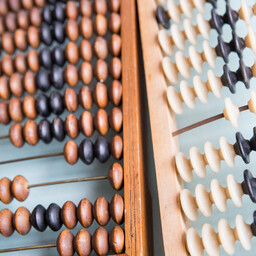Düskalkuulia mõjutab arvude ja hulkade tajumist. Näiteks peab düskalkuulik täringumängus silmade arvu ükshaaval kokku lugema. Samuti võib ta pakkuda, et toa kõrgus on 200 meetrit.
Peamine abivahend
düskalkuulia
ga inimesele on tema sõrmed. Kui on vaja teha tehe 8 + 4, loendab ta seda sõrmede toel. Nad ei kasuta automaatseid strateegiaid, mida teised kasutavad. Korrutustabel võib vajada rohkem harjutamist.
düskalkuulia
Tõlge fraasile: düskalkuulia
EN
dyscalculia
Eestis puudub
düskalkuulia
statistika, ent see on
aladiagnoositud
. Suurbritanniast näiteks leiti, et 20-st õpilasest on ühel
düskalkuulia
.
düskalkuulia
Tõlge fraasile: düskalkuulia
EN
dyscalculia
aladiagnoositud
Tõlge fraasile: aladiagnoositud
EN
underdiagnosed
düskalkuulia
Tõlge fraasile: düskalkuulia
EN
dyscalculia
Õpetajal tasub tähele panna, kas mõni laps jääb veel kolmandas-neljandas klassiski sõrmedel arvutama. Düskalkuulia võib põhjustada kõrget ärevust, näiteks nuttu või paanikahoogu.
Düskalkuuliat ei saa ravida, kuid seda saab leevendada. Lapsed saavad kasutada abivahendeid nagu arvutuskett või arvuklotsid. Oluline on, et laps saaks arvutamist katsuda ja näha.
Düskalkuuliat
esineb paljudel kuulsatel inimestel
, näiteks Robbie Williams, Cher ja Bill Gates. Arvutusraskus ei ole elus takistus, sest need inimesed on loovad ja intelligentsed.
esineb paljudel kuulsatel inimestel
Tõlge fraasile: esineb paljudel kuulsatel inimestel
EN
found in many famous people
Dyscalculia affects the perception of numbers and quantities. For example, a person with dyscalculia may need to count the dots on a dice one by one. They might also guess that the height of a room is 200 meters.
The main tool for a person with dyscalculia is their fingers. When they need to calculate 8 + 4, they count it using their fingers. They do not use automatic strategies that others use. The multiplication table may require more practice.
There is no dyscalculia statistics in Estonia, but it is underdiagnosed. For example, in the UK it was found that one in twenty students has dyscalculia.
Teachers should pay attention to whether some children still rely on fingers to calculate in the third and fourth grades. Dyscalculia can cause high levels of anxiety, such as crying or panic attacks.
Dyscalculia cannot be cured, but it can be alleviated. Children can use tools such as a counting chain or number blocks. It is important that the child can touch and see the calculations.
Dyscalculia is present in many famous people, such as Robbie Williams, Cher, and Bill Gates. Computational difficulties are not a barrier in life because these people are creative and intelligent.

